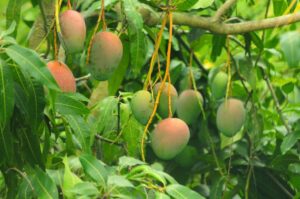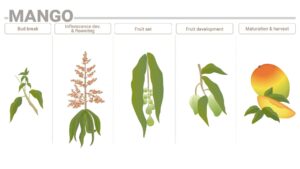Foliar potassium nitrate sprays at 2% and 5% induced mango flowering and number of fruits retained per tree
The aim of the study was to determine the influence of different application rates of the inducing substance, potassium nitrate, on enhancement of flowering in mango clone “Chok Anan” and ultimately, the fruit production.
This field experiment was conducted in Selangor, Malaysia, with trees aged about twelve months and five-years-old.
The plants were subjected to three treatments of spray application with 1% KNO3, 2% KNO3 and 5% KNO3 onto mango shoots at two weeks interval until flower initiation. The experiment was arranged in a randomized complete block design.
Twelve-months-old mango trees initiated only little flowering when sprayed with 1% KNO3, while flowering induction was not observed for the control and on terminal bud treated with 2% and 5% KNO3. Flowering induction was highly observed for the five-year-old mango trees treated with 2% and 5% KNO3. More flowers generated a higher fruit set rate and thus increased the number of fruits produced (Table 1).
It was concluded that the age of tree and shoot maturity may influence the flowering response to KNO3 application. Best results were observed with 2% KNO3 (potassium nitrate) sprays to induce early flowering in five-year-old mango trees.
Table 1. Effect of potassium nitrate sprays on flowering intensity and fruit number of five-years-old mango trees.




